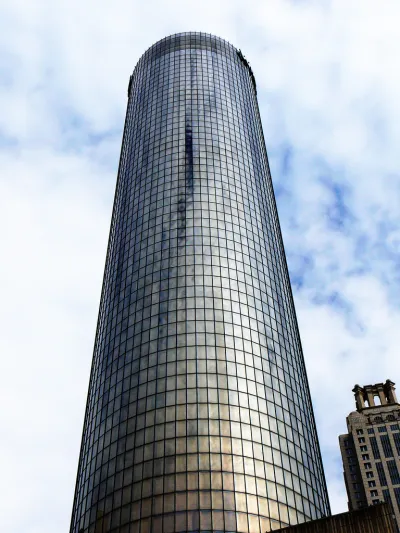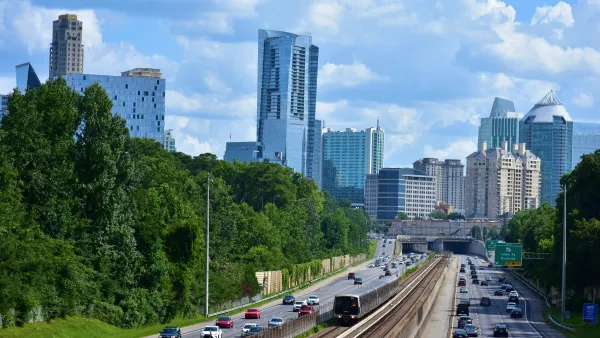Even movies set long ago and far, far away have to be filmed somewhere. With uncanny frequency, many of them, including "The Hunger Games" and "Insurgent," have been filmed in the futuristic/dystopian landscape designed by John Portman in Atlanta.

Having been rebuilt from scratch following the Civil War, Atlanta hit its stride by the 1980s, when it embraced modernist planning and modern architecture like few other American cities had. One of the poster children for urban sprawl, Atlanta built miles of freeways and built downtown towers with scant connections to the streets. Leading this modernist transformation was architect John Portman, whose signature atriums, glass elevators, and glass facades were meant to feel like cities within a city, sealed off from the chaos outside.
While urban planning has moved on from that era, Portman's apparent quest for modernity has made his buildings seem more futuristic than ever, so much so that they are frequently featured in science fiction films. The future often does not look very bright. Recently, post-apocalyptic stories including The Hunger Games: Mockingjay, Insurgent, and Interstellar have all used Portman buildings as backdrops.
Analyzing the role of Portman's work in contemporary cinema, Kristi York Wootten writes in The Atlantic:
"Filmmakers use architecture to represent societies that are forming or collapsing, and conceptual structures are too eccentric to symbolize the collective groups that dominate dystopian storylines. Portman’s work fits on film in part because his design philosophy straddles the modernism and brutalism handed down to his generation from predecessors such as Le Corbusier and Marcel Breuer, who strove to incorporate functionality and community into their buildings."
FULL STORY: How 1980s Atlanta Became the Backdrop for the Future

National Parks Layoffs Will Cause Communities to Lose Billions
Thousands of essential park workers were laid off this week, just before the busy spring break season.

Retro-silient?: America’s First “Eco-burb,” The Woodlands Turns 50
A master-planned community north of Houston offers lessons on green infrastructure and resilient design, but falls short of its founder’s lofty affordability and walkability goals.

Delivering for America Plan Will Downgrade Mail Service in at Least 49.5 Percent of Zip Codes
Republican and Democrat lawmakers criticize the plan for its disproportionate negative impact on rural communities.

Test News Post 1
This is a summary

Test News Headline 46
Test for the image on the front page.

Balancing Bombs and Butterflies: How the National Guard Protects a Rare Species
The National Guard at Fort Indiantown Gap uses GIS technology and land management strategies to balance military training with conservation efforts, ensuring the survival of the rare eastern regal fritillary butterfly.
Urban Design for Planners 1: Software Tools
This six-course series explores essential urban design concepts using open source software and equips planners with the tools they need to participate fully in the urban design process.
Planning for Universal Design
Learn the tools for implementing Universal Design in planning regulations.
EMC Planning Group, Inc.
Planetizen
Planetizen
Mpact (formerly Rail~Volution)
Great Falls Development Authority, Inc.
HUDs Office of Policy Development and Research
NYU Wagner Graduate School of Public Service





























